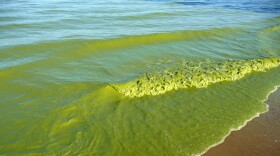A new analysis from the Environmental Working Group finds 90% of the more than 2,500 animal feeding operations in the western basin of Lake Erie are not monitored by any government agency.
A lot of attention is given to the big factory farms that have to get permits and report how much animal waste is produced and where it’s put on fields. But new data finds that the smaller livestock operations contribute more than 60% of the phosphorus in the basin.
Smaller farms don’t have to report how much manure their animals produce or on what fields they’re spreading it. The animal waste contains phosphorus which can get into Lake Erie, causing cyanobacterial blooms. Those blooms can produce toxins dangerous to people and to animals.
The report said animal facilities in or on the edge of the watershed house a combined total of 400,000 cows, 1.8 million hogs, and 24 million chickens and turkeys.
Anne Schechinger, the Environmental Working Group's Midwest director, said Ohio is not looking into where the most likely problems are. That state offers farmers financial assistance for using conservation measures that could reduce agricultural runoff, and farmers who volunteer are eligible for the help.
In contrast, she said, Michigan is actively pinpointing what farms should be encouraged to help to reduce the phosphorus pollution.
“So, they’re not just kind of giving money to who wants it, who might not actually be a major contributor of phosphorus to Lake Erie, but they’re prioritizing the farmers that likely have the largest amounts of runoff.”
Both the Michigan Department of Environment, Great Lakes and Energy and the Department of Agriculture and Rural Development are working together to identify where it makes the most sense to use funds to help farmers.
“And then they use their own data along with our data to actually prioritize, you know, which farm fields do they think have the largest phosphorus runoff likelihood,” Schechinger said.
She added that means the money available to reduce phosphorus runoff in Michigan is working harder to solve the problem.






